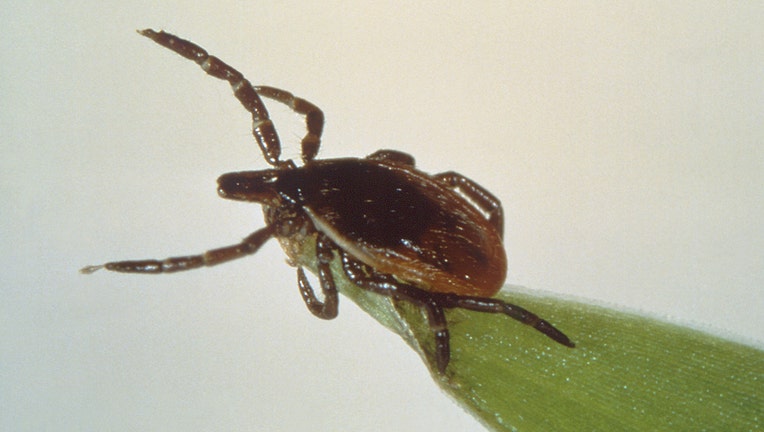Powassan virus death in Connecticut

A deer tick; also called a blacklegged tick; Ixodes scapularis. (CDC Photo)
The Connecticut Department of Public Health has reported a second Powassan virus infection case this year.
The elderly New London County woman, in her 90s, died. She is the third known death ever in the state from the tick-borne disease.
She became ill in early May and was admitted to a hospital with fever, altered mental status, headache, chills, rigors, chest pain, and nausea. Her condition worsened, and she became unresponsive over the next two weeks. She died on May 17.
The unnamed woman did have a known tick bite which was removed two weeks prior to the onset of symptoms. Laboratory tests performed at the Centers for Disease Control and Prevention Laboratory in Ft. Collins, Colorado confirmed the presence of antibodies to POWV.
The first patient diagnosed with POWV this year was a Windham County man in his 50s who became ill in late March. He was hospitalized with a central nervous system disease and had a known tick bite. He was later released and recovered at home.
Lyme Disease coverage from FOX5NY.com
From 2017 to 2021, 12 cases of POWV-associated illness were reported in Connecticut, including three in 2021. Of those 12 cases between 2017 and 2021, two were fatal.
POWV is usually spread through the bite of an infected black-legged or deer tick. It takes a week to one month after the bite from an infected tick to develop symptoms of POWV disease, and the virus can be transmitted in as little as 15 minutes after the tick first attaches.
While most people infected with POWV likely experience no symptoms or a mild flu-like illness, some people will develop severe illness affecting the central nervous system. About one out of 10 cases of severe illness are fatal and approximately half of survivors experience long-term health problems.
Severe cases may begin with fever, vomiting, headache, or weakness and rapidly progress to confusion, loss of coordination, difficulty speaking, or seizures. There is no vaccine nor a specific treatment for POWV associated illness. Severe illness is treated by supportive therapy which may include hospitalization, respiratory support, and hydration.
Tips for preventing tick bites
- Avoid areas where ticks are likely to be, such as in grassy, brushy, or wooded areas. Ticks are most active from spring to fall but may also be active on warmer days during winter.
- Consider the use of CDC-recommended mosquito repellents containing DEET, picaridin, oil of lemon eucalyptus, IR3535, or 2-undecanone, and apply according to directions, when outdoors.
- Check yourself and your children for ticks immediately after coming indoors. Showering within two hours of coming indoors may be effective in reducing the risk of tick-borne disease.
- Examine clothing, gear, and pets carefully after coming indoors. Tumble dry clothing for 10 minutes to kill ticks that were carried inside.
- Talk to your veterinarian about the best tick prevention products for your dog.
- Consider treating items such as boots, clothing, and hiking or camping gear with products containing 0.5 percent permethrin.
- For information on the Powassan virus and how to prevent tick bites, visit https://www.cdc.gov/powassan/index.html

